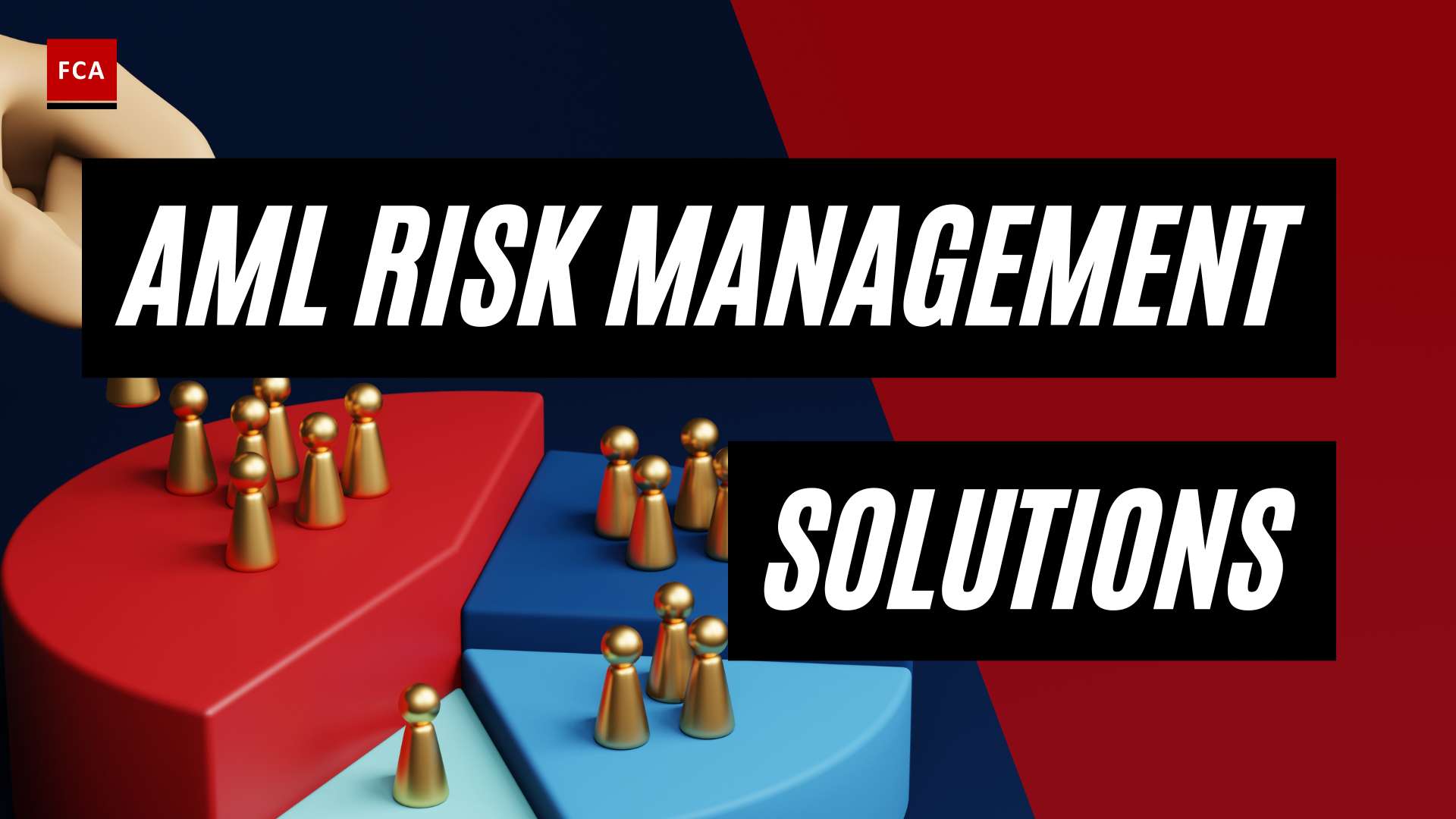Money Laundering Through Real Estate
Money laundering through real estate has become a significant concern within the financial industry and regulatory bodies. By exploiting the complexities of real estate transactions, individuals with illicit funds can disguise the origins of their money, making it appear legitimate. Understanding the methods and challenges associated with real estate money laundering is crucial for effective detection and prevention.
Overview of Real Estate Money Laundering
Real estate money laundering refers to the process of integrating illicit funds into the legitimate economy through real estate transactions. The vast amounts of money involved in real estate transactions, coupled with the complexity of property markets, make it an attractive avenue for money laundering schemes.
According to a report by the Global Financial Integrity think tank, at least $2.3 billion has been laundered in the U.S. real estate market in the last five years alone. The report highlights the U.S. as a preferred destination for individuals seeking to hide illicit funds through property investments, with politically exposed persons (PEPs) involved in more than half of the reviewed cases.
Commercial real estate transactions, rather than residential deals, have been a significant focus in money laundering schemes within the U.S. Complex financing arrangements and the involvement of multiple parties in commercial investments create an easy avenue to conceal illicit funds.
Major Challenges in Detecting Real Estate Money Laundering
Detecting real estate money laundering poses significant challenges for regulatory authorities and financial institutions. Some of the major obstacles include:
-
Limited oversight: The lack of comprehensive regulations specific to real estate money laundering allows illicit funds to flow through real estate deals with little oversight. The United States, once considered a leader in regulating against money laundering through real estate, has lost ground over time compared to the U.K. and Europe. While the Bank Secrecy Act added “persons involved in real estate closings and settlements” to the definition of financial institutions in 1988, regulatory progress has slowed down.
-
Geographic limitations: The U.S.’s primary tool to detect potential money laundering events in real estate transactions, geographic targeting orders (GTOs), has shown limitations in identifying illicit activities. More than 60% of the money laundering cases examined in the U.S. involved properties located outside the areas covered by GTOs, indicating the inadequacy of the current system in place to combat real estate money laundering effectively.
-
Complexity of commercial transactions: Commercial real estate transactions, involving complex financing arrangements and multiple parties, pose additional challenges for identifying money laundering schemes. These arrangements provide opportunities to layer and obscure the origins of illicit funds, making detection more difficult.
Addressing these challenges requires a multi-faceted approach involving regulatory measures, enhanced education and scrutiny, and collaboration between real estate professionals and authorities. By understanding the methods used in real estate money laundering and the challenges faced, the industry can work towards implementing effective preventive measures and strengthening anti-money laundering regulations.
Methods of Money Laundering in Real Estate
Money laundering through real estate involves various techniques and strategies that criminals employ to disguise the illicit origins of funds. Understanding these methods is crucial for professionals in compliance, risk management, anti-money laundering, and anti-financial crime to effectively combat real estate money laundering.
Cash Purchases and Undervalued Properties
One common method used in real estate money laundering schemes is the use of cash purchases and undervalued properties. Criminals often acquire properties using large amounts of cash, which makes it challenging to trace the source of the funds. By purchasing properties with cash, money launderers can avoid scrutiny from financial institutions and regulatory authorities.
In addition to cash purchases, criminals may manipulate property values by collaborating with real estate agents or appraisers to either undervalue or overvalue properties. Undervaluing properties allows money launderers to obtain loans based on the lower value, while overvaluing properties enables them to maximize the amount laundered through inflated property values. These tactics make it difficult to detect and trace the illicit origins of funds involved in real estate transactions.
Shell Companies and Nominee Buyers
Shell companies and nominee buyers play a significant role in real estate money laundering. Criminals establish shell companies in foreign jurisdictions to own real estate, providing a layer of anonymity and facilitating the movement of illicit funds across borders. By using shell companies, money launderers can hide their true identities and make it challenging for authorities to trace the flow of funds in real estate transactions.
Another method involves using nominees, or third parties, to purchase properties on behalf of the money launderer. Nominee buyers act as intermediaries, shielding the true ownership of the property from scrutiny. This technique further conceals the origin of the funds used in real estate transactions, making it difficult to trace them back to their illicit source.
Collusion with Real Estate Professionals
Collusion with real estate professionals is another method employed in real estate money laundering. Criminals may collaborate with real estate agents, appraisers, or other professionals involved in the real estate industry to facilitate their illicit activities. This collaboration can include providing false property valuations, assisting in the creation of shell companies, or helping to disguise the true ownership of properties.
The involvement of real estate professionals in money laundering schemes makes it harder to detect suspicious transactions and identify the individuals behind them. It underscores the importance of robust due diligence processes and increased scrutiny within the real estate industry to prevent and detect potential money laundering activities.
Understanding these methods of money laundering in real estate is vital for implementing effective anti-money laundering measures. By recognizing the red flags associated with these methods, professionals can enhance their ability to identify and report suspicious real estate transactions. Collaboration between real estate professionals and authorities is essential in combating real estate money laundering and maintaining the integrity of the real estate sector.
Red Flags for Real Estate Money Laundering
Identifying potential instances of money laundering through real estate requires a keen understanding of the red flags that may indicate illicit activities. By recognizing these warning signs, professionals working in compliance, risk management, anti-money laundering, and anti-financial crime can play a crucial role in combating real estate money laundering. Here are three key red flags to watch out for:
Large Cash Transactions
One of the primary red flags for potential money laundering in real estate transactions is the use of a large amount of cash to purchase a property without a mortgage. Such transactions raise suspicions as they bypass traditional banking channels and can obscure the true source of funds (DOAR Law). Criminals may utilize this method to introduce illicit funds into the legitimate economy by converting them into real estate assets.
To address this red flag, regulatory authorities and professionals must implement robust due diligence processes to verify the source of funds. This may include requiring detailed documentation and conducting thorough investigations into the buyer’s financial background.
Quick Closings and Overpayment
Another red flag for potential money laundering in real estate transactions is when a buyer insists on a quick closing or offers to pay substantially more than the asking price without a reasonable explanation for the high price (DOAR Law). These situations may indicate an attempt to expedite the process and obscure the true value of the property.
Professionals involved in real estate transactions should be vigilant when encountering such circumstances. Conducting enhanced due diligence, including verifying the buyer’s identity, conducting background checks, and scrutinizing the transaction details, can help identify potential money laundering activities.
Involvement of Third Parties
The involvement of third parties in real estate transactions, particularly those who are not part of the normal transaction process, could indicate potential money laundering efforts in real estate. Criminals may enlist the help of intermediaries or professional facilitators to conceal the true ownership of the property and obscure the origins of illicit funds.
To combat this red flag, real estate professionals must exercise due diligence by thoroughly examining the identities and roles of all parties involved in the transaction. Reporting suspicious activities to the appropriate authorities is essential for further investigation and potential disruption of money laundering schemes.
By remaining vigilant and recognizing these red flags, professionals can contribute to the early detection and prevention of real estate money laundering. Collaboration between industry stakeholders, regulatory bodies, and law enforcement agencies is crucial in implementing effective measures to safeguard the integrity of the real estate sector. For more information on real estate money laundering and preventive measures, refer to our article on real estate money laundering prevention.
Regulatory Measures to Combat Real Estate Money Laundering
To address the pervasive issue of money laundering through real estate, regulatory bodies have implemented various measures to mitigate the risks and strengthen the anti-money laundering (AML) framework. In this section, we will explore three important regulatory measures: Geographic Targeting Orders (GTOs), the role of private investment advisers, and the need for enhanced AML education and scrutiny.
Geographic Targeting Orders (GTOs)
Geographic Targeting Orders (GTOs) have been a primary tool used by regulatory authorities to detect potential money laundering events in real estate transactions. GTOs require certain U.S. title insurance companies to identify beneficial owners in high-value real estate transactions and report this information to the Financial Crimes Enforcement Network (FinCEN). However, it is important to note that GTOs have shown limitations in identifying all illicit activities. According to the International Consortium of Investigative Journalists (ICIJ), more than 60% of the examined money laundering cases in the U.S. involved properties located outside the areas covered by GTOs, indicating the need for a more comprehensive approach to combat real estate money laundering effectively (ICIJ).
Role of Private Investment Advisers
In combating real estate money laundering, it is crucial to address the role of private investment advisers. Investment vehicles such as private equity, venture capital, and hedge funds serve as key methods for laundering through commercial real estate. These investment vehicles often lack specific anti-money laundering requirements, making them attractive channels for illicit funds. Regulating private investment advisers and imposing AML obligations on them is essential to close this loophole. By subjecting these advisers to robust AML regulations and supervision, authorities can enhance the overall effectiveness of efforts to combat real estate money laundering.
Need for Enhanced AML Education and Scrutiny
To effectively combat real estate money laundering, there is a pressing need for enhanced education and scrutiny related to AML practices. While regulatory measures such as the Financial Action Task Force’s (FATF) recommendations on AML emphasize supervising designated non-financial businesses and professions, including real estate, there are gaps in implementation. Professionals involved in real estate closing and settlements, such as real estate agents, lawyers, and accountants, often face low levels of obligation implementation for AML and counter-terrorist financing (CTF) programs. This highlights the importance of providing comprehensive AML education and ensuring rigorous scrutiny of transactions and parties involved. The Biden administration aims to address these issues by focusing on real estate embezzlement and corruption, particularly in all-cash transactions, in order to strengthen the AML framework in the United States (ComplyAdvantage).
Regulatory measures that focus on beneficial ownership and reporting are also key in mitigating money laundering risks in the real estate sector. By requiring thorough identification of beneficial owners and establishing robust reporting mechanisms, authorities can enhance transparency and accountability in real estate transactions (Comsure Group).
As different jurisdictions continue to strengthen their real estate money laundering regulations, collaboration between real estate professionals and authorities is crucial. By working together, they can share knowledge, exchange information, and develop best practices to effectively detect and prevent money laundering activities in the real estate sector. Through a multi-faceted approach that includes regulatory measures, education, and collaboration, the fight against real estate money laundering can be significantly strengthened.
Global Cases of Real Estate Money Laundering
Money laundering through real estate is a global issue, with several countries experiencing significant cases of illicit funds flowing into their real estate markets. Let’s explore some notable examples of real estate money laundering in different regions.
U.S. Real Estate Market
The United States has been a preferred destination for individuals seeking to hide illicit funds through property investments. According to a report by the Global Financial Integrity think tank, at least $2.3 billion has been laundered in the U.S. real estate market in the last five years. The report also highlighted the involvement of politically exposed persons (PEPs) in more than half of the reviewed cases (ICIJ). Commercial real estate transactions, in particular, have been a significant focus in money laundering schemes within the U.S., with complex financing arrangements and the involvement of multiple parties providing opportunities to conceal illicit funds (ICIJ). To learn more about real estate money laundering in the U.S., visit our article on real estate money laundering investigations.
London and the UK
London, in particular, has been a hotspot for money laundering through real estate. The UK has seen £1.5 billion worth of property, primarily in London, acquired by individuals accused of corruption. Over 2,189 firms in the UK and its overseas territories have been involved in Russian money laundering cases, totaling over £82 billion in disguised funds from rigged procurement, embezzlement, and bribery. To delve deeper into the issue, refer to our article on real estate money laundering schemes.
Toronto and Vancouver in Canada
Canada, specifically Toronto and Vancouver, has also been a target for real estate money laundering. Over the past decade, approximately $20 billion entered the Greater Toronto area’s real estate market without proper scrutiny from anti-money laundering authorities. This influx of funds highlights the substantial amounts involved in real estate money laundering in the region. For more information on Canadian cases and preventive measures, refer to our article on real estate money laundering prevention.
Germany and Australia
Germany and Australia have also faced significant challenges with real estate money laundering. In Germany, an estimated $30 billion of funds with uncertain origins entered the real estate market in 2017. Meanwhile, Australia’s anti-money laundering regulator reported that Chinese interests alone laundered more than $1 billion through Australian real estate in 2020. The Australian Federal Police seized $116 million worth of real estate assets in the 2021 financial year as part of their efforts to combat money laundering in the real estate sector.
These global cases of real estate money laundering illustrate the need for robust regulatory measures and enhanced cooperation between real estate professionals and authorities. By understanding the methods and prevalence of real estate money laundering in different regions, stakeholders can work together to strengthen anti-money laundering regulations and prevent the misuse of the real estate sector for illicit purposes. For a comprehensive overview of real estate money laundering and preventive measures, explore our article on real estate money laundering methods.
Preventive Measures and Best Practices
In order to combat money laundering through real estate effectively, preventive measures and best practices are essential. These measures aim to enhance transparency, strengthen regulations, and foster collaboration between real estate professionals and authorities. Let’s explore some of the key strategies in detail.
Beneficial Ownership and Reporting
Regulators emphasize the importance of identifying beneficial ownership and implementing robust reporting mechanisms to mitigate money laundering risks in the real estate sector (ComplyAdvantage). Beneficial ownership refers to the individuals who ultimately own or control the property or the funds used in the transaction. By knowing the true beneficial owners, authorities can better assess the legitimacy of the transaction and detect potential money laundering activities.
To achieve this, real estate professionals should conduct thorough due diligence on clients involved in high-value transactions. This includes verifying the identities of buyers, sellers, and any intermediaries involved. Additionally, reporting requirements should be strictly adhered to, ensuring that suspicious transactions are promptly reported to the relevant authorities.
Strengthening Anti-Money Laundering Regulations
To address the evolving nature of money laundering schemes, it is crucial to continually strengthen anti-money laundering (AML) regulations in the real estate sector. This involves implementing comprehensive frameworks that outline the obligations and responsibilities of real estate professionals in identifying and reporting suspicious activities.
Regulations should cover a range of areas, including customer due diligence, record-keeping, risk assessments, and internal controls. By establishing clear guidelines and standards, authorities can effectively combat money laundering and enhance the integrity of the real estate market.
Collaboration between Real Estate Professionals and Authorities
Collaboration between real estate professionals and authorities is key to effectively preventing and detecting money laundering activities. Real estate agents, brokers, lawyers, and other professionals play a vital role in identifying potential red flags and reporting suspicious transactions.
By providing training and education on AML practices, authorities can empower real estate professionals to recognize the signs of money laundering. This collaboration also involves establishing channels of communication between real estate professionals and law enforcement agencies, facilitating the sharing of information and intelligence.
Additionally, public-private partnerships can foster a collaborative environment in which information exchange and joint efforts are encouraged. By working together, real estate professionals and authorities can create a formidable defense against money laundering in the real estate sector.
Implementing these preventive measures and best practices is crucial to safeguarding the real estate industry from the risks posed by money laundering. By prioritizing beneficial ownership and reporting, strengthening AML regulations, and fostering collaboration between real estate professionals and authorities, the industry can take significant strides in deterring and detecting illicit financial activities.








